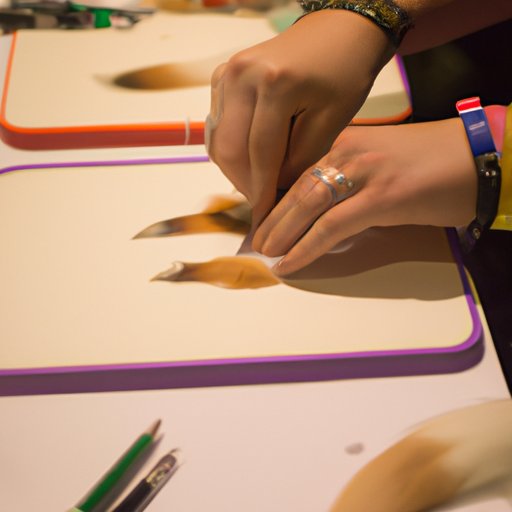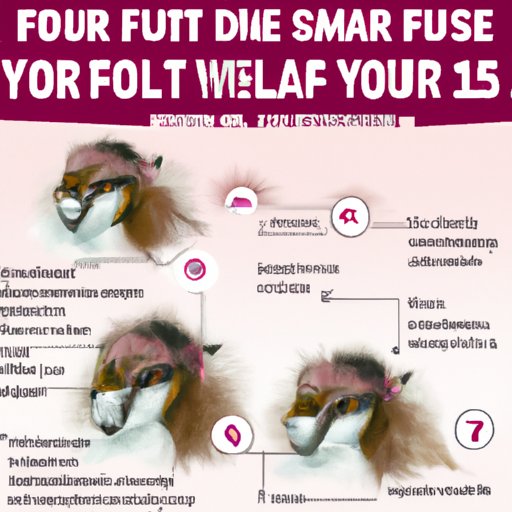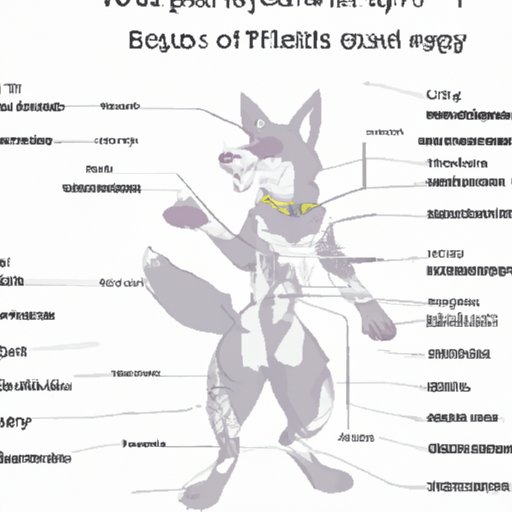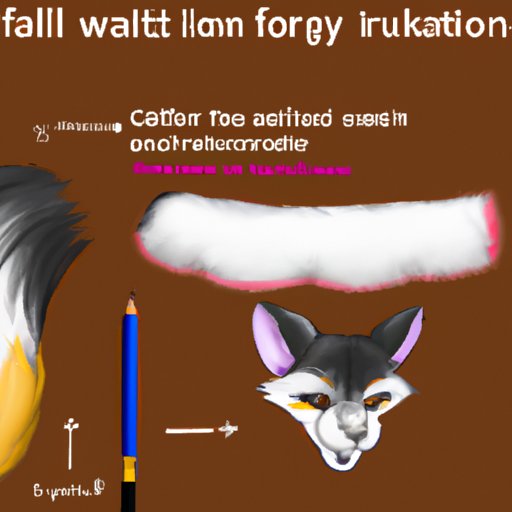Introduction
Furry art is a popular genre of art that focuses on anthropomorphic animals – creatures that look like a mix between a human and an animal. From cartoon-style drawings to highly detailed and realistic pieces, there’s no one right way to create furry art. In this article, we’ll explore the different types of furry art, provide tips and techniques for creating realistic fur, and discuss some of the most popular mediums for drawing furry art.
Definition of Furry Art
The furry fandom is a subculture that celebrates anthropomorphized animals and characters. According to the International Anthropomorphic Research Project (IARP), “Anthropomorphism is defined as the attribution of human characteristics and behaviors to non-human entities, including animals, plants, inanimate objects, and supernatural or mythological creatures.”
Furry art is any artwork that features anthropomorphic animals. It can range from cartoon-style drawings to highly detailed and realistic pieces. Furry art can be found in many different forms, including comics, paintings, and sculptures.
Overview of the Different Types of Furry Art
There are many different types of furry art, each with its own unique style and aesthetic. Some of the most popular types of furry art include:
- Cartoon-style art – This style of furry art typically features exaggerated features and bright colors. It’s often used in comics and animations.
- Realistic art – This type of furry art focuses on creating a lifelike, realistic representation of an anthropomorphic animal. It usually features subtle details and shading.
- Abstract art – Abstract furry art often features abstract shapes and patterns that evoke an emotion or feeling. It can also feature surreal elements or strange combinations of animals.
- Tribal art – Tribal furry art typically incorporates traditional tribal designs and symbols. It often features bold colors and geometric shapes.

Showcase Different Techniques for Creating Furry Art
When it comes to creating furry art, there are several techniques you can use to make your drawings more dynamic and interesting. Here are some tips and techniques that can help you create better furry art:
Blocking in Basic Shapes
One of the first steps in creating furry art is to block in the basic shapes. Start by sketching out the main body parts. You can use simple shapes such as circles and rectangles to get the proportions right. Once you have the basic shapes blocked in, you can start to add more detail and refine the drawing.
Adding Detail and Texture
Once you have the basic shapes blocked in, you can start adding detail and texture to your drawing. Take your time to observe the fur patterns and try to replicate them as accurately as possible. You can also use reference images to help you get the details just right.
Refining Your Drawing
Once you’ve added detail and texture to your furry art, you can start to refine the drawing. Pay attention to the light and shadows and make sure they’re accurate. You can also use shading techniques to make the fur look realistic and three-dimensional.
Popular Mediums for Drawing Furry Art
When it comes to drawing furry art, there are many different mediums you can use. Here are some of the most popular mediums for drawing furry art:
Pencils
Pencils are one of the most popular mediums for drawing furry art. They’re easy to use and allow you to create very detailed and realistic drawings. You can also use a variety of pencils to achieve different effects, such as graphite pencils for shading and colored pencils for adding color.
Markers
Markers are another popular medium for drawing furry art. They’re great for quickly adding color and texture to your drawings. Markers come in a variety of colors, so you can easily create vibrant and colorful furry art.
Digital Art
Digital art is becoming increasingly popular for drawing furry art. Digital tools such as tablets and software programs allow you to quickly and easily create complex, detailed drawings. Plus, you can easily save and share your digital art online.

Tips for Drawing Realistic Fur
Drawing realistic fur can be challenging, but there are some tips and techniques that can help you achieve a more realistic look. Here are some tips for drawing realistic fur:
Observing Natural Fur Patterns
When drawing realistic fur, it’s important to observe the natural fur patterns of the animal you’re drawing. Look closely at the fur and note how it falls and moves. This will help you create a more realistic and dynamic drawing.
Using Reference Images
Reference images can be extremely helpful when drawing realistic fur. Look for images of the animal you’re drawing that show the fur up close. This will help you get the details just right and create a more realistic drawing.
Understanding Light and Shadow
Light and shadow play a huge role in creating a realistic fur texture. Pay attention to how the light falls on the fur and how it affects the shadows. This will help you create a more dynamic and realistic drawing.

Useful Anatomy References When Drawing Furry Art
In order to create a realistic and believable furry character, it’s important to understand the anatomy of the animal you’re drawing. Here are some useful anatomy references when drawing furry art:
Skeletal Structure
It’s important to understand the skeletal structure of the animal you’re drawing. Knowing the bones and joints of the animal will help you create a more believable and realistic drawing.
Muscle Groups
Knowing the muscle groups of the animal you’re drawing will help you create a more dynamic and believable drawing. Observe how the muscles move and stretch and use this information to create a more realistic drawing.
Fur Lengths and Textures
Fur lengths and textures can vary greatly from animal to animal. Pay attention to the fur of the animal you’re drawing and use this information to create a more realistic drawing.
Conclusion
Creating furry art can be a fun and rewarding experience. By understanding the different types of furry art, showcasing different techniques for creating furry art, discussing popular mediums for drawing furry art, and offering tips for drawing realistic fur, as well as useful anatomy references when drawing furry art, you can create beautiful and realistic furry art. So don’t be afraid to experiment and practice! With enough practice, you’ll be able to create stunning furry art.
(Note: Is this article not meeting your expectations? Do you have knowledge or insights to share? Unlock new opportunities and expand your reach by joining our authors team. Click Registration to join us and share your expertise with our readers.)
